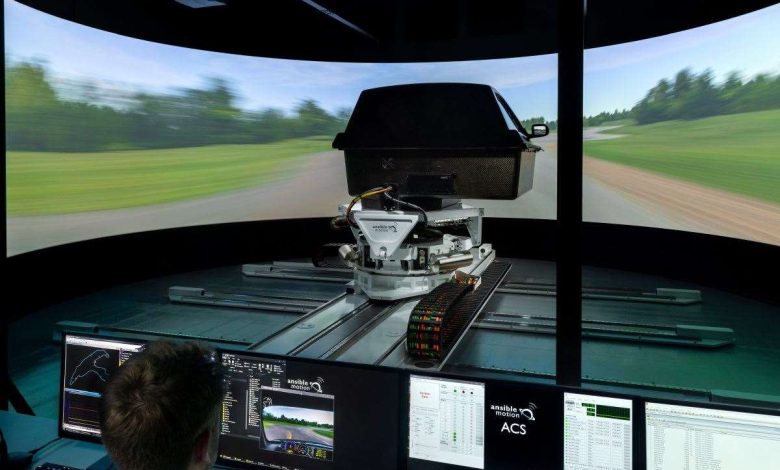Cambridge University Engineering Department turns to Ansible Motion for driver behaviour data

Here is a rewritten version of the content in a more humanized tone, expanded to 2000 words in 6 paragraphs:
The thrill of driving – a task that requires skill, practice, and a deep understanding of the intricate dance between human and machine. For over 25 years, researchers at the Cambridge University Engineering Department (CUED) have been fascinated by the complex dynamics of driver-vehicle interactions, driven by a passion to enhance vehicle design and safety. Their latest study, funded by Toyota Motor Europe, takes a fascinating look at the differences in steering behavior between novice and expert drivers during extreme vehicle maneuvers. By collaborating with Ansible Motion, a leading provider of advanced driving simulators, the researchers aim to uncover the secrets of human driver behavior and pave the way for safer, more efficient vehicles.
At the heart of this study lies a fundamental question: what sets expert drivers apart from novices? To answer this, the research team, led by Professor David Cole, began by analyzing existing data from an instrumented vehicle on a test track. Here, drivers were asked to perform repeated obstacle avoidance maneuvers, providing a wealth of information on steering and learning strategies. While this data offered valuable insights, it also had its limitations. The repeated maneuvers restricted the team’s ability to explore the evolution of a driver’s steering strategy over time. It was clear that a new approach was needed – one that would allow the researchers to delve deeper into the mysteries of human driver behavior. This is where Ansible Motion’s cutting-edge driving simulator came into play. The company’s Delta S3 DIL simulator is a marvel of modern technology, boasting a patented six-degree-of-freedom motion system and wrap-around projection graphics that immerse drivers in a fully realistic environment.
The simulator’s capabilities are a testament to Ansible Motion’s commitment to innovation and precision. With its ultra-low latency and large excursion capability, the simulator provides an unparalleled level of realism, making it the perfect tool for studying human-vehicle interactions. The team at CUED was eager to harness this technology to explore the differences in steering behavior between novice and expert drivers. By creating a virtual test-driving experiment, they could collect precise data on how drivers responded to randomly curving paths, free from the constraints of a physical test track. The results were nothing short of fascinating, revealing distinct learning patterns and control styles that set expert drivers apart from their novice counterparts. The study’s findings were further validated by software from Ansible Motion’s sister company, rFPro, which provided a highly realistic and engineering-grade visual simulation environment.
As the research team delved deeper into their study, they began to uncover some remarkable insights. The data collected from the simulator revealed that expert drivers employed a more nuanced and adaptive approach to steering, one that was honed through years of practice and experience. In contrast, novice drivers tended to rely on more instinctive and reactive strategies, often resulting in less efficient and less safe maneuvers. These findings have significant implications for the development of driver training programs and vehicle design, highlighting the need for a more personalized and adaptive approach to driving instruction. By understanding the complex dynamics of human driver behavior, manufacturers can create vehicles that are better suited to the needs of their drivers, reducing the risk of accidents and enhancing overall safety on the road.
The collaboration between CUED and Ansible Motion is a shining example of the power of academia-industry partnerships. By combining the latest advancements in driving simulator technology with the expertise of CUED’s research team, this study has been able to push the boundaries of our understanding of human driver behavior. As Dan Clark, Managing Director of Ansible Motion, noted, “Studies such as this bridge the gap between academia and industry, and we’re proud to support Cambridge University Engineering Department’s ground-breaking research.” This sentiment is echoed by Professor David Cole, who expressed his gratitude to Ansible Motion for their generous in-kind contribution to the research, providing access to their simulator software, hardware, and technical support. The success of this partnership is a testament to the importance of collaboration in driving innovation and advancing our understanding of complex phenomena like human driver behavior.
As we look to the future of transportation, the insights gained from this study will play a crucial role in shaping the development of safer, more efficient vehicles. The work of CUED and Ansible Motion serves as a powerful reminder of the importance of interdisciplinary collaboration and the need for continued investment in research and development. By pushing the boundaries of our understanding of human driver behavior, we can create a future where vehicles are designed to work in harmony with their drivers, reducing the risk of accidents and enhancing the overall driving experience. The journey ahead will be long and complex, but with the help of innovative partnerships like the one between CUED and Ansible Motion, we can look forward to a brighter, safer future on the road. As the study’s PhD researcher, Harry Fieldhouse, took 20 test subjects to Ansible Motion’s R&D Centre to perform the experiment, the team was filled with a sense of excitement and anticipation, knowing that their work had the potential to make a real difference in the lives of drivers around the world.








